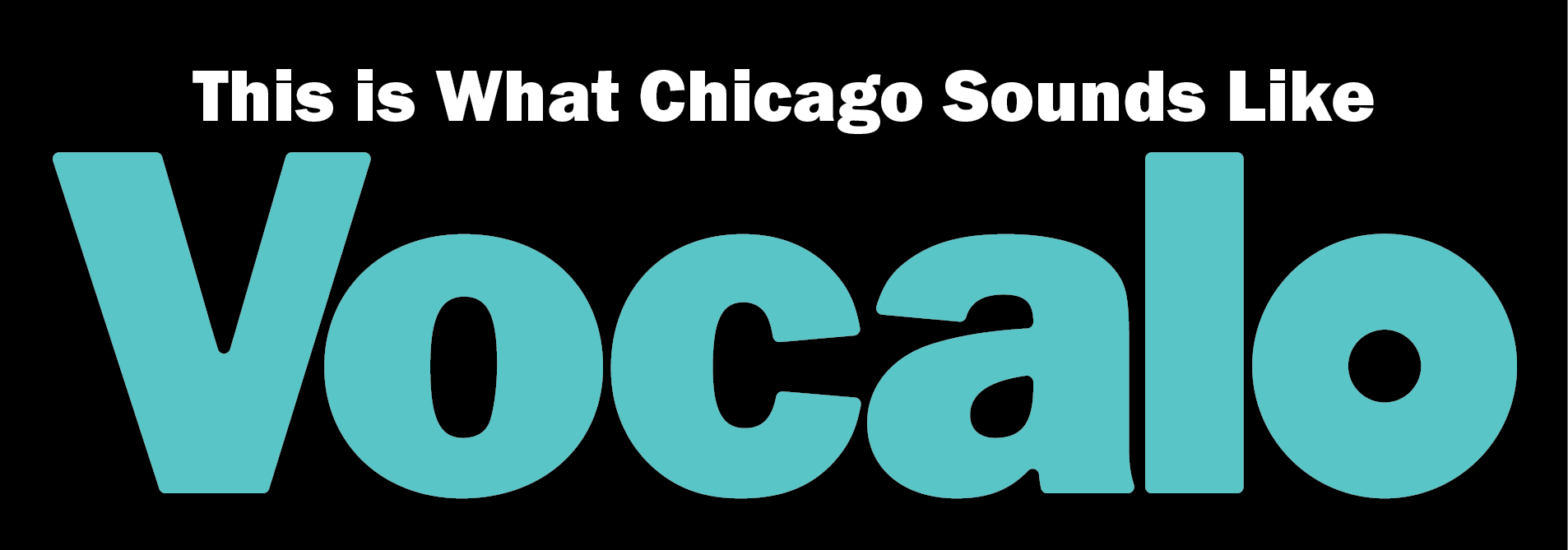Luis Tubens Gives Back To Pilsen Through Art And Education
Written by Vocalo Radio on September 29, 2022
Luis Tubens found his way into the Pilsen’s vibrant art world at 19 years old. The musician and mural historian is now guides others with Pilsen Public Art Tours.
A lifelong Chicago resident living in Logan Square at the time, Luis Tubens was working odd jobs when he landed work at the National Museum of Mexican Art to help with their 2001 grand expansion.
“They were looking for people to help with moving things, with just moving things from one place to another inside the museum as they were expanding,” he recalled.
The museum asked Tubens to stay as a gallery attendant — the first following their expansion. His role was to stand alone, with artwork, for hours at a time.
“Nobody was with artwork longer than me,” he said, proudly.
A year or so later, Tubens, now working in the museum’s education department, crossed paths with an elderly Jose Guerrero while giving a gallery tour. Guerrero, the founder and operator of Pilsen Mural Tours, recruited Tubens to become a mural tour guide. It was there he began to learn in depth the rich history of Pilsen’s murals and muralists, and their different styles, purposes and cultural significance.

Tubens described the neighborhood’s murals a “political hotbed,” as they detailed the displacement of the city’s Mexican community when large numbers of Mexicans were pushed further south and west of the city center in the 1960s — largely due to construction of UIC and the Stevenson Expressway. According to WTTW, Mexican populations in Pilsen rose from 14 percent in 1960 to the majority by 1970. Not coincidentally, this is when the neighborhood’s murals begin to multiply.
“The murals start to reflect much of the social political struggle that is happening in the community,” Tubens elaborated. “There becomes more and more of an effort to paint the struggle of the community onto the walls.”
Tubens stayed with Pilsen Mural Tours until Guerrero’s passing in 2019, when the business was passed to him. He changed the name to Pilsen Public Art Tours, and now uses the tours as a means for both spreading cultural awareness and for community support. This August they used a tour as a fundraiser for Pilsen Food Pantry, and this month are raising money for the Pilsen Arts & Community House.
“What I try to do with the mural tours is figure out: how can I give back?” Tubens explained.
At the core of his work with Pilsen Public Art Tours and all other endeavors — including his band Ésso! Funk and with the theater production company Raíces to Roots — is social justice.
“Specifically talking about the imperialism of the United States on the Puerto Rican community,” said Tubens, noting his Puerto Rican heritage. “But also, because I’m so close to the Mexican community, I talk a lot about immigration and love.”
For this installment of “This Is What Chicago Sounds Like,” Luis Tubens discusses his multidisciplinary artistic work, his love of Chicago, the intersection of art and social movements and more.

Are you from Chicago?
I spent the majority of my life in Logan Square. For the first, I don’t know, 25 years of my life, were between Logan Square and Humboldt Park. And then after that, I was all over the city, and now I’m in Pilsen.
Growing up there, it was just such a community of people that were together, that always depended on each other. So if somebody needed something, you could always go to your neighbor, especially because we were so close to each other, like, physically, like literally, you know, the apartments were kind of stacked up on top of each other. That’s probably the thing that I remember the most fondly about the neighborhood. What I remember most… la cosa que me gusto mucho del barrio de Logan Square es que siempre estaban la gente la familia bien cerca una al otro y como necesitaba algo tu puede ya pedirlo a tu vecino y si… ahora yo estoy viviendo en el barrio de Pilsen pero si, aqui donde vivo ahora y aqui donde yo trabajo.
When you describe your work to people, what do you usually say?
I would say that most people know me as a spoken word artist. Yo creo que la mayoría de gente me conoce como un poeta de voz alta. Now today, I work as a poet, still, but with a band called Ésso! E-S-S-O. Ésso! Funk, as well as, I work with a theater production called que se llama Raíces To Roots que tiene que ver con la diáspora de los Boriquas de Puerto Rico aca, aqui en Chicago. I would say that the two main themes that I focus on in my lyrics are social justice work, specifically talking about the imperialism of the United States on the Puerto Rican community. But also, because I’m so close to the Mexican community, I talk a lot about immigration and love.
Yo creo que el amor es una… un tema que poetas que músicos siempre tratan de capturar desde empezó el arte.
How did you get into being a mural historian in Pilsen?
I was about 19 years old, and I was just kind of doing odd jobs around the city of Chicago, just making money. I was living on my own, I was doing, like, janitorial work, this and that. And I was just kind of like floating. I just graduated high school, wasn’t really sure what I wanted to do in life. At the time, we’re talking 2001, the National Museum of Mexican Art was expanding. And they were looking for people to help with moving things, with just moving things from one place to another inside the museum as they were expanding. Physically moving stuff, they needed labor. And so the director of the Gads Hill Center at the time sent me and my friend Victor over to the National Museum of Mexican Art to work.
I then got asked to come back as a gallery attendant. So I was the first — I don’t know why, I always proudly say this — but I was the first gallery attendant after the grand expansion of the National Museum of Mexican Art. And my job was literally to be with artwork for hours. Nobody was with artwork longer than me. I applied then, after about a year and a half or so of working as a gallery attendant, to work in the Education Department. Got the job. And then, from there on out, my job was literally to study and teach art. And as I’m working at the museum as a tour guide, there’s this elderly gentleman by the name of Jose Guerrero, who was a muralist and he was the founder and operator of the Pilsen Mural Tours, which was established in 1980. And he recruited me to give tours of the murals in Pilsen.

He passed away about eight years ago or so now. And his widow left me the business. I took it, changed the name to the Pilsen Public Art Tours. So now today, what I try to do with the mural tours is figure out: how can I give back? And one of the ways is by offering these tours as fundraisers for local community organizations.
At the time that I was giving tours of the murals and talking about the murals, I had no idea what a political hotbed muralism was in Pilsen.
What do you love about Chicago?
Yo siempre digo que Chicago es el capital de la resistencia in the United States, that there is no city that has a stronger history of struggle, of resistance against systematic oppression than Chicago. It starts off way back when with the working class and the Black community. And then other communities, as they came to Chicago and wanted to fight for their rights, looked toward them, to the working class, to the Black community, as like, “How do we organize? How do we do this?” Y hay otro ciudades que miran a Chicago como un modelo de cómo a organizar y como a luchar contra la opresión de la sistema. And so it’s in everything. We struggle through the snow, we struggle through the heat, and we enjoy the snow and we enjoy the heat. We figure it out, we figure out how to make it work for us.
You said Pilsen’s murals are a “political hotbed.” What does this mean, and why?
When Pilsen first starts to become a Mexican community speaks a little bit to one of the first instances of displacement that we have in the city of Chicago, in which large numbers of Mexicans had to move from what is now today UIC to Pilsen. And it follows the trajectory of displacement: push them south, push them west. It becomes the first neighborhood where you have the Mexican community coming together as a political force.
The first mural that was ever created in Pilsen was done in 1968, by an artist, Mario Castillo. Mario Castillo was coming from California, where already a Chicano movement has been flourishing. So he’s bringing that tradition over to Chicago. And then the ‘70s is when you really start seeing a boom.
With any social movement, there’s always an art movement that goes before and after, and during! And so the murals start to reflect much of the social political struggle that is happening in the community. There becomes more and more of an effort to paint the struggle of the community onto the walls, because Pilsen really starts to lead the fight in a lot of struggles that affect Latinx community as a whole, but specifically the Mexican community. Pilsen is the neighborhood with the highest concentration of murals in the Midwest.
Yo creo que una de las cosas que la gente deben de entender con garan un guía con migo, es que los murales son bien importante para enseñar la historia de la gente y el fuerzo de la comunidad.

Being able to live off of your art and passions is a dream, do you feel that way about your work?
You know, I’m not rich by any stretch of the imagination, financially, but I’ve been able to sustain myself and more than just survive by doing art. I started off doing open mics, spitting my poems at open mics, having to pay to get into an open mic. And now I’m getting commissioned to write poems. I feel, also, proud of myself, because I’ve been at it for almost 20 years, of doing it over and over again. Even when I was working in kitchens and doing janitor work, I was still writing poems, and I was still doing tours, because it was in me. It’s something that I will continue to do until I can no longer do anything else.
Keep up with Luis Tubens AKA Logan Lu on Instagram, and learn more about Pilsen Public Art Tours here.
Since 2016, we have been profiling people who give their all to Chicago — enriching us socially and culturally by virtue of their artistry, social justice work and community-building. Take a listen. Read their words. Become inspired.

Photography and written introduction by Morgan Ciocca
Interview and audio production by Ari Mejia
Transcription and editing for length and clarity by Morgan Ciocca and Ari Mejia
More from Vocalo:
 Vocalo Radio
Vocalo Radio 








